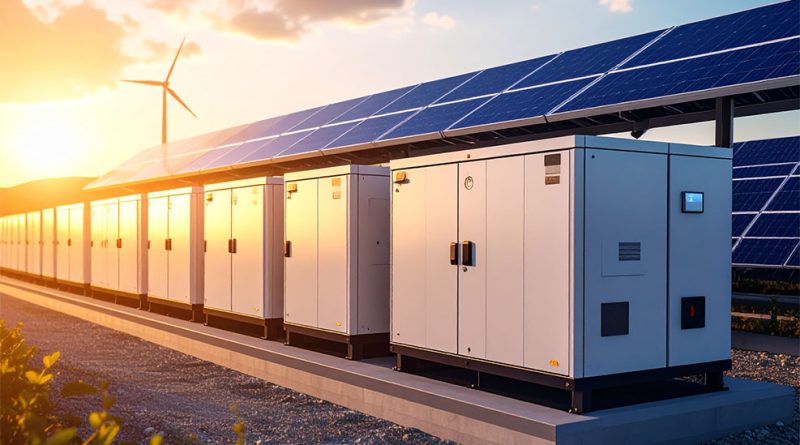8 Innovative Ways We Can Use Thermal Energy & Thermal Energy Storage
As the global push for clean energy accelerates, thermal energy is emerging as a critical and versatile solution in the decarbonization toolkit. Unlike electricity, thermal energy heat stored in liquids, solids, or gases can be retained and dispatched when needed, making it ideal for both short- and long-duration energy storage. From district heating networks in Europe to next-gen residential systems and industrial-scale applications, innovations in thermal energy storage (TES) are reshaping how we capture, store, and use heat.
Here are eight powerful and practical ways thermal energy and TES are being deployed to improve efficiency, cut carbon emissions, and enhance grid stability.
1. Solar Power with Molten Salt Storage
Thermal energy from solar power can be stored using molten salt, an efficient medium that retains heat for hours or even days. This method is widely applied in Concentrated Solar Power (CSP) plants like Andasol in Spain. These facilities use mirrors to focus sunlight onto a central receiver, heating molten salt to over 500°C. This stored energy generates steam for electricity production even after sunset, solving the intermittency challenge of solar power.
2. District Heating & Seasonal Thermal Storage
Urban centers increasingly use Seasonal Thermal Energy Storage (STES) to store summer heat for winter use. Systems like Aquifer Thermal Energy Storage (ATES) in the Netherlands and Denmark store heat in underground water reservoirs or insulated tanks. These systems enable entire communities to reduce fossil fuel consumption for heating, making them a cornerstone of sustainable urban infrastructure.
3. Building-Level Chilled Water & Ice Storage
Commercial buildings deploy chilled water or ice tanks to shift cooling loads to nighttime, when electricity is cheaper. This approach cuts peak demand and reduces energy bills by up to 50%. Companies like Nostromo Energy are scaling ice storage solutions in data centers and hotels, helping to decarbonize HVAC systems, which account for nearly 40% of commercial energy use.
4. Industrial Waste Heat Recovery
Heavy industries waste vast amounts of heat during manufacturing processes. Thermal storage technologies now capture and reuse this energy using phase-change materials or ceramic blocks. Startups like MGA Thermal in Australia have developed modular systems that store heat up to 500°C, enabling steam generation for industrial reuse. These innovations lower emissions while boosting operational efficiency.
5. Grid-Scale Thermal Energy Batteries
Thermal batteries convert surplus renewable electricity into heat, store it in high-density materials like molten silicon or graphite, and later reconvert it into electricity. MIT’s TEGS (Thermal Energy Grid Storage) system exemplifies this approach. It stores energy at up to 2400°C, offering affordable, long-duration storage for balancing grid supply and demand without relying on lithium-ion.
6. Thermochemical & PCM Storage
Phase-change materials (PCMs) and thermochemical systems offer compact and efficient heat storage. PCMs absorb or release energy when they change states—like melting or freezing, while thermochemical storage relies on reversible chemical reactions for higher energy density. These systems suit both residential and industrial applications, enabling energy conservation with minimal thermal loss over time.
7. Residential Thermal Batteries & Smart Heat Pumps
At home, smart heat pumps combined with thermal batteries allow users to store heat during off-peak hours for later use. Companies like Tepeo and Sunamp have developed compact thermal batteries that integrate with home systems, enabling energy savings and grid-friendly behavior. These solutions are ideal in markets with dynamic pricing or carbon-based incentives.
8. Greenhouse & Agricultural Applications
Thermal energy also enhances agricultural productivity. Seasonal storage systems collect solar heat during summer to warm greenhouses in colder months. These systems reduce fossil fuel reliance and stabilize growing conditions year-round. Some advanced designs use rock bed storage or PCMs to manage temperature swings, boosting crop yields sustainably.
Thermal energy and its storage systems are proving indispensable across sectors—from powering cities and homes to transforming agriculture and industry. By bridging gaps in renewable generation and reducing dependency on fossil fuels, these technologies make the clean energy transition more resilient and economically viable. As innovation continues, thermal energy storage will play an even greater role in reshaping our global energy landscape.
